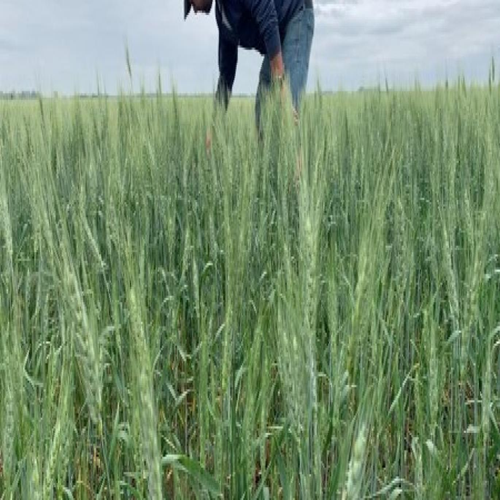Sugar Signalling Breakthrough Could Boost Wheat Yields by Up to 12%

A breakthrough study has shown that boosting wheat’s sugar signalling via the molecule Trehalose 6-phosphate (T6P) can raise yields by up to 12%. The treatment improves starch production and photosynthesis, offering a major advance over traditional breeding. Developed over 25 years, the technique is now being commercialized by SugaROx to help enhance crop resilience and reduce fertiliser use.
Enhancing wheat’s sugar signalling pathways could raise yields by as much as 12%, according to a new study by researchers from Rothamsted Research, the University of Oxford, and the Rosalind Franklin Institute, published today in Nature Biotechnology. That’s significantly higher than current annual gains achieved through conventional breeding.
The breakthrough centres on Trehalose 6-phosphate (T6P), a signalling molecule that regulates sugar levels in plants and plays a key role in metabolism, growth, and starch production — the main contributor to wheat yield. By applying a T6P precursor directly to the crop, researchers were able to stimulate starch biosynthesis in the grain and increase photosynthesis in the flag leaf, leading to improved yield, according to a press release.
The approach builds on work begun at Rothamsted in 2006. A four-year field study using plots at CIMMYT in Mexico and INTA in Argentina confirmed the yield boost under real-world conditions — including varying rainfall levels, one of the main limitations on global crop production.
In addition to enhancing yield, T6P treatment also activated genes linked to amino acid and protein synthesis. This suggests it may be possible to reduce fertiliser use, a promising development for addressing the common problem of protein dilution in high-yield wheat varieties.
“The path from discovery to translation has taken 25 years,” says Rothamsted’s Dr Matthew Paul who led the research with Professor Ben Davis at The Rosalind Franklin Institute and Oxford University. “Such timeframes are not untypical in blue-skies plant research, but we do hope new technologies, such as AI and faster analytical techniques, can accelerate this process. We will need many more innovations like this to create sustainable and resilient agriculture in the coming decades. I am so grateful to my excellent people, co-workers and teams and for grants from UKRI-BBSRC which made this work possible. Getting this far has been hard work but extremely rewarding”.
Rothamsted and Oxford have created SugaROx, a spinout company, to deliver this research to farmers. Dr Cara Griffiths, lead author of the research paper and CEO of SugaROx, said, “It’s exciting to be able to take cutting-edge technology from the bench to the field. Getting this kind of impact is often difficult to translate to the field, and this work demonstrated that novel crop inputs have huge promise to enhance yield and resilience in our cropping systems, something that is particularly important in a rapidly changing climate.”
“This work provides an excellent example of a case where direct selective manipulation of key molecular structures, rather than genetics or gene editing, inside a living system is a game changer,” said Professor Davis. “It has been very inspiring to design and discover this new class of ‘drug for plants’ together.”
To Read more about Wheat News continue reading Agriinsite.com
Source : Seed World

















